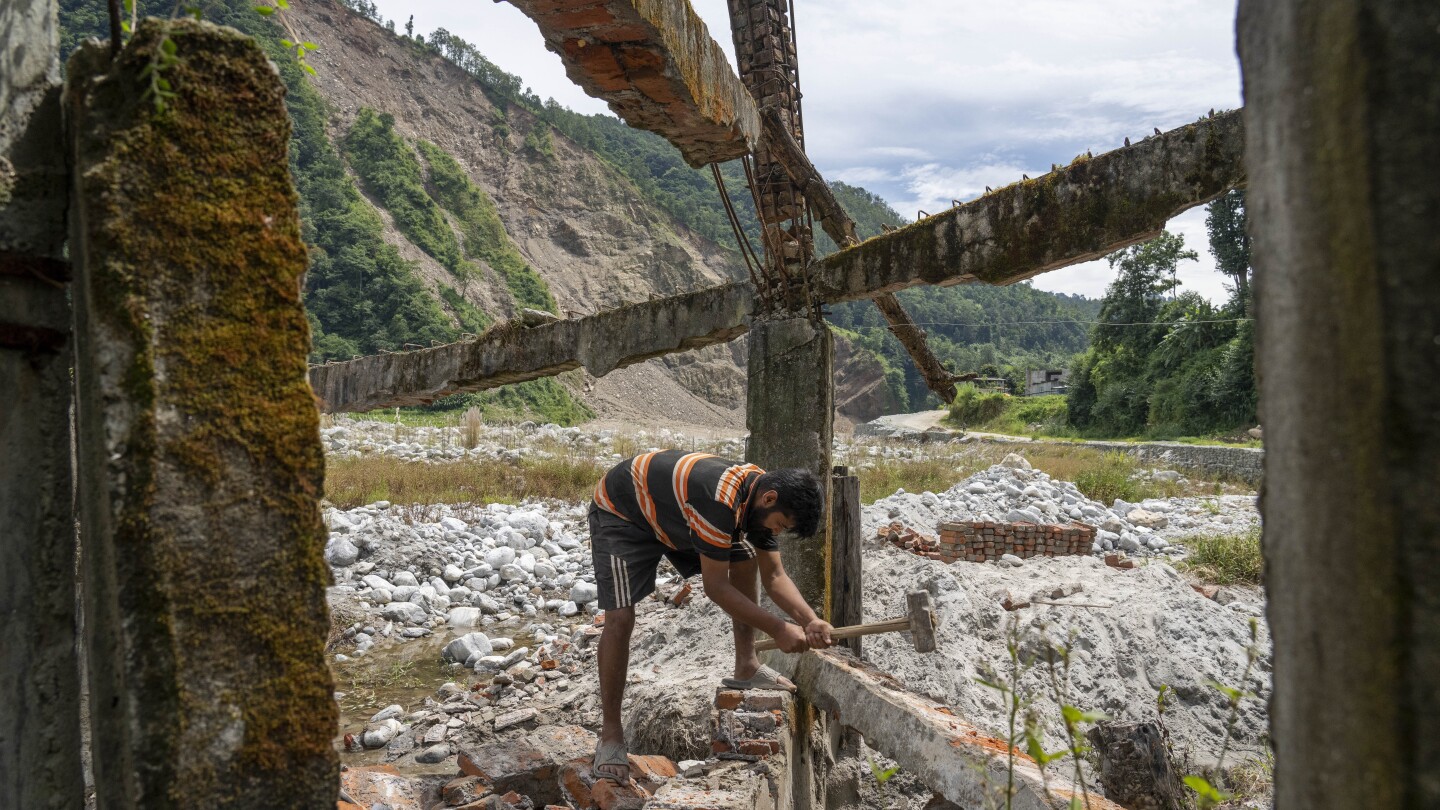MELAMCHI, Nepal (AP) — In between the Himalayas’ towering mountains, the town of Melamchi is no stranger to extreme weather, and its landscape bears the scars of years of floods and landslides.
Located just 50 kilometers (31 miles) outside Kathmandu, lush green mountainsides are dotted with landslips and rubble. Amid the debris, people live and work, and children play.
Saroj Lamichane, a 24-year-old resident of the region, says he still remembers “the terrifying sound of the flood.” Lamichane fled that night, returning only to collect belongings wedged between boulders and broken walls.
Many houses in Melamchi are on stilts to avoid the worst of the flooding. Still, floors are covered in a layer of loose rock. Windows have been ripped out of walls. And some buildings still slant after Nepal’s devastating 2015 earthquake.
Farms are also not spared.
Sukuram Tamang, 50, lost his land and field to floods in 2021, and his home was damaged in a landslide this year. When The Associated Press visited, Tamang stood holding one of his goats — a literal handful of what survived Melamchi’s incessant weather extremes.
“Even the little that remained has been swept away by floods earlier this year,” said Tamang’s wife, Maya. “The river used to be a 20-minute walk from our house but during the floods, we were shocked to see it overflow and wash away everything we had.”
Another farmer, Sita Pandit, 50, took a loan to rebuild her home that was destroyed in the earthquake. But one year after construction finished, her new home was swept away by the 2021 floods. Rocks and debris now cover her farm.
In a 2021 report, the Kathmandu headquartered International Centre for Integrated Mountain Development found that cascading hazards are becoming more common in Nepal and the Hindu Kush Himalaya.
Rising temperatures are leading to heavy glacial melt and glacial lakes overflowing. They also lead to shifting rainfall patterns which bring heavy sediments downstream, said Sudan Bikash Maharjan, one of the authors of the 2021 report.
Maharjan said local and federal governments need to be better prepared and give people time to evacuate.
Until then, many work hard to rebuild their old lives. People reconstruct homes among the debris or build new ones entirely. They walk and live among pieces of homes and furniture. Layers of mud cover up the lives they once lived.
___
Follow Niranjan Shrestha on Instagram.
___
The Associated Press’ climate and environmental coverage receives financial support from multiple private foundations. AP is solely responsible for all content. Find AP’s standards for working with philanthropies, a list of supporters and funded coverage areas at AP.org.

